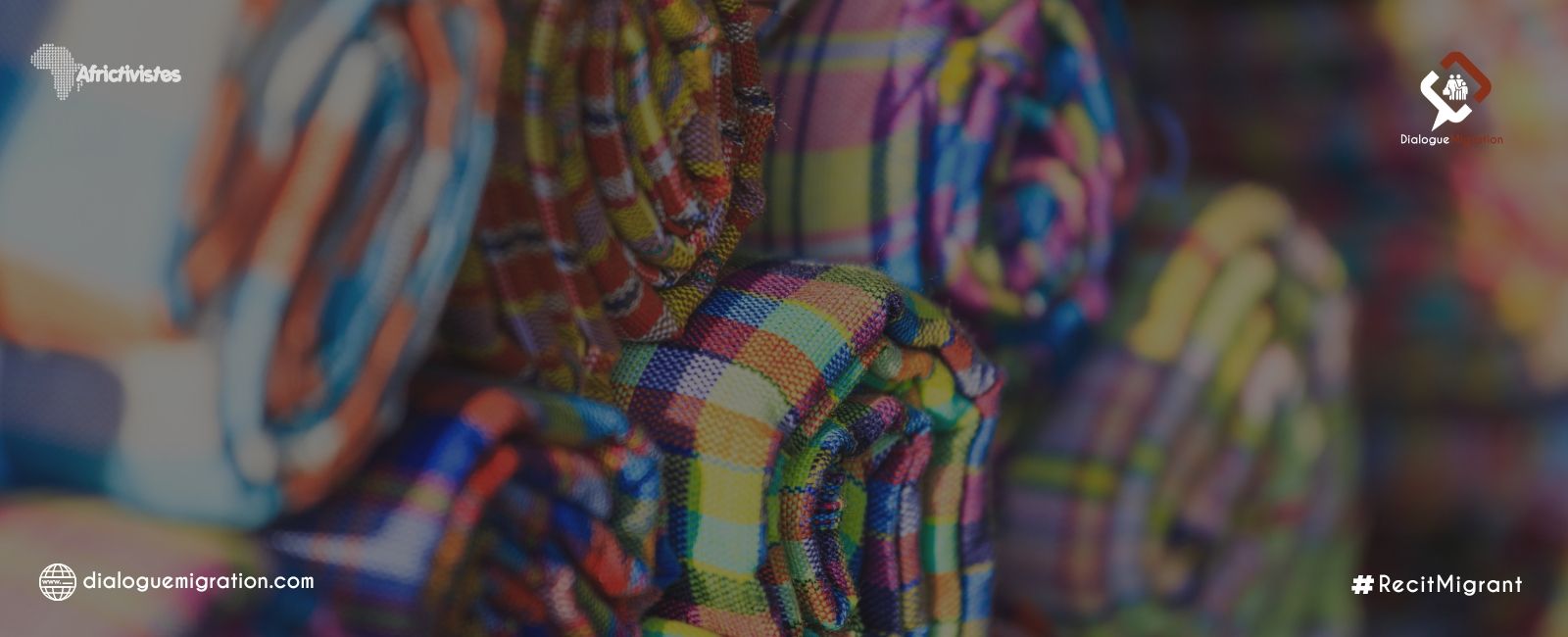

The wax loincloth is a high-quality printed cotton fabric that African women use to make their clothes. Today, it is not only used in Africa as it has become very popular all over the world. In the Democratic Republic of Congo, the loincloth has become an integral part of Congolese culture. It is often worn on special occasions such as weddings, funerals, religious ceremonies, and festivals. For some time now, wearing loincloths in the DRC has become the symbol of International Women’s Day. Westerners who visit the country fall in love with this fabric after seeing it for the first time. But why do they love the loincloth of the DRC so much?
Dialogue Migration went to meet Rebecca Toutain. She is a 30 years old French national. Having come to the DRC as an expatriate working for a United Nations agency, the young woman is very much linked to Congolese culture. She always dresses in loincloths. Her love for this piece of fabric is such that even the curtains in her house are made of Congolese loincloths. For her, Westerners appreciate the Congolese loincloth for its visual beauty and unique aesthetic. She explains: “It was during my first posting in Goma (eastern DRC) that I saw the loincloth for the first time. I fell in love with the loincloth. First of all, the Congolese loincloth is very colourful and aesthetic. The patterns and colours are often vibrant and expressive, which catches the eye and evokes a sense of joy and festivity. »
In addition, the Congolese loincloth is a symbol of Congolese cultural identity. According to Rebecca Toutain, Westerners who wear the wax loincloth demonstrate their respect and appreciation for African culture. “When I dress in a loincloth, I become African and specifically Congolese and I feel not only safe, but also indebted tothis culture, although there are people who are curious every time I pass by with my loincloth,” adds Rebecca Toutain. The wax loincloth is also very versatile and can be worn in a variety of ways.
He continues: “Westerners love the wax loincloth for its versatility and its ability to adapt to different styles and occasions. The loincloth can be worn as a dress, skirt, shirt, scarf, tie or even as a decorative accessory. »
The wax loincloth is made from high-quality materials and is often produced by hand. Westerners appreciate the know-how and expertise of (skilled) artisans in the Democratic Republic of Congo who create patterns of these fabrics either by hand or from the factory.
Economic contribution of the loincloth
But the loincloth is not limited to its cultural significance. It also plays a crucial economic role in Congolese society. The sales of Congolese loincloths have created jobs for many local artisans, thus contributing to the local economy.[1] [2] [3] Women in particular, who are often involved in the Congolese loincloth industry, can thus provide for their families and achieve a degree of financial independence. In addition, the Congolese loincloth trade has grown significantly in recent years, with increasing demand both domestically and internationally.
This growth has led to the creation of structures totally dedicated to the loincloth of the DRC. This is the case, among others, of Elizabeth Jafee’s company “Lifestyle loincloth”. A former foreign service officer at the U.S. State Department, she started selling loincloth items made in the DRC.
Her company makes modern designs and items in loincloth “with a pop of colour, bold patterns, and a modern twist to housewares, bags and totes, furniture, and apparel and accessories.”
Congolese loincloths are exported to many countries, which promotes Congolese handicrafts on a global scale and generates additional income for the country’s economy.


